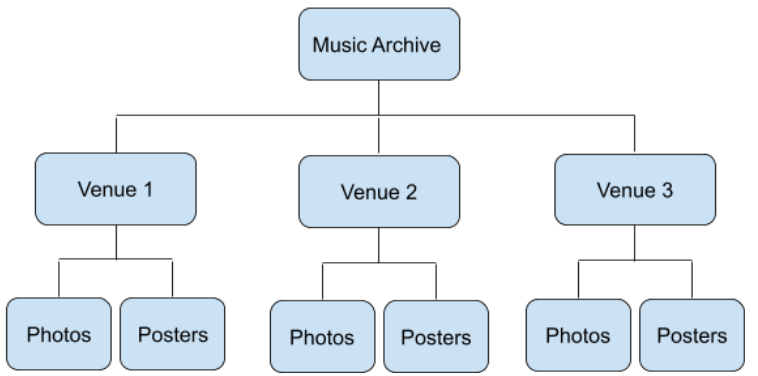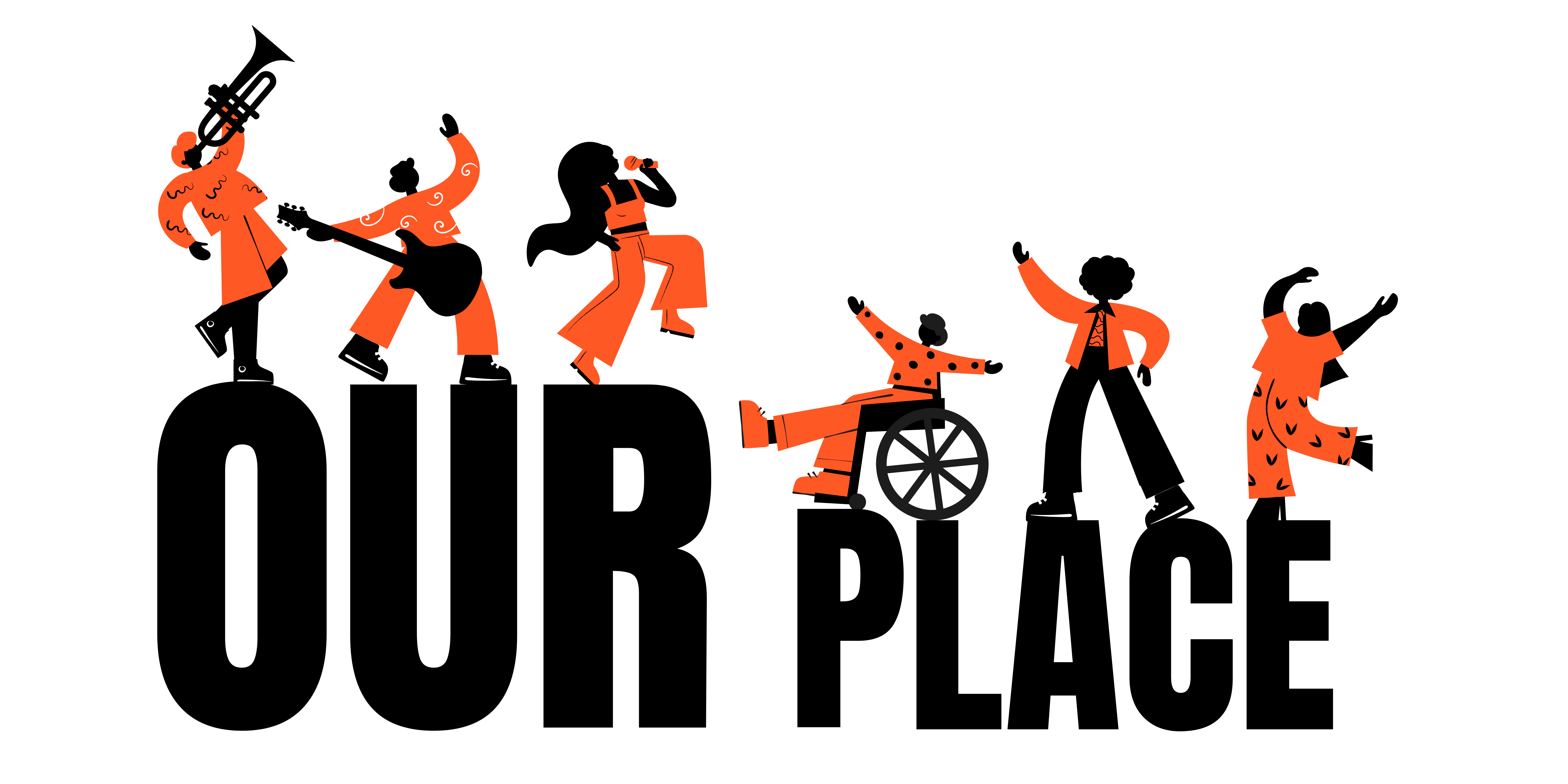Organising your digital archive
This guide covers some approaches to organising your digital archive — an essential step for future-proofing your material. There are two important steps in organising your digital files:
- Grouping your material
- Naming your files and folders
Group your files
Separate your files into logical folders. These could correspond to months/years, artists, venues. How you separate your content is up to you, but by splitting out your material your archive will be more manageable. Think about what materials belong together and keep the structure logical and simple. For example, if you have an archive of gig recordings, you may wish to organise these by date, venue or performer.
If you have a large number of files (more than 10) in each folder, consider creating subgroups. For example, if you organise your gig recordings by date, you could create a subgroup for each year or month.
Be careful when copying or moving your files: only delete the original file once you have checked the new version has copied properly and opens on your computer. If you have a large number of files, make sure you check at least one of each format in the new location before deleting the originals.
Name your files
Rather than keeping default file names such as “IMG_8152”, give each individual file a brief but descriptive name, e.g. “Flyer_JohnCooperClarke_TivoliArtsCentre_1984-11-19”. The more specific your file names, the easier they will be to find. Try to follow these rules:
- Keep it brief (try to keep them under 100 characters)
- Name your files consistently. This means putting the information in the same order each time you name a file (using the example above, this would be ObjectType_Performer_Venue_Date)
- Don’t use special characters (# <> @ + % ! & * | {} ? /\ ” = @ and blank spaces)
- Instead of spaces, use capital letters to distinguish between words
- Use hyphens (-) or underscores (_) to separate elements in a file name
- Use the YYYY-MM-DD format for dates
Document your organisational system
Once you have decided on an organisation system for your files, make sure you document it as a plain text file. You can call this file “readme”. The readme file should be kept with the archive and should include:
- The grouping method you are using (what is in each file, and is it organised by theme, content type, format?)
- The naming convention you are using (in what order are you placing the information in your file names? How are dates formatted? How do you denote versions?)
You may wish to document your filing structure visually:

You can also document your filing structure using text:
- Music Archive
- Venue 1
- Photos
- Poster
- Venue 2
- Photos
- Posters
- Venue 3
- Photos
- Posters
- Venue 1
Further resources
UK Data Service, Organising Data
University of Westminster, Organising Your Data Files
